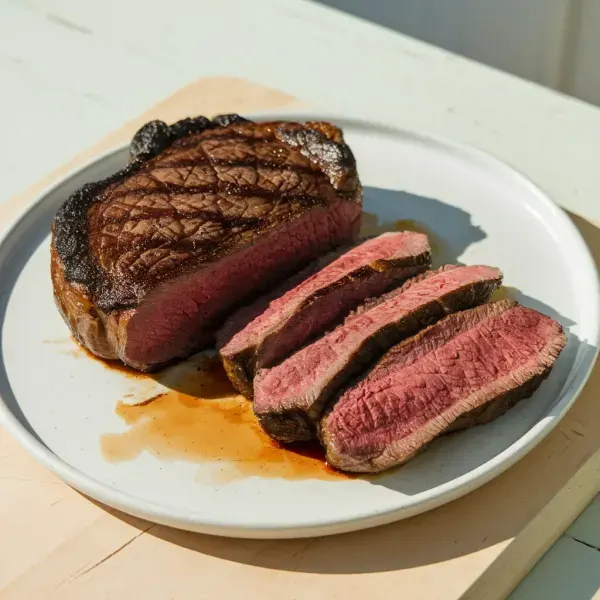
 60 minutes
60 minutesA guide to making a perfectly seared steak using a cast-iron skillet.


teaspoons
Boneless Beef Steak, 1 inch thick
0 lb
to taste
1. Prepare Steaks
Start by removing the steaks from their packaging and patting them dry with paper towels. Let them sit on a plate at cool room temperature for about 30 to 60 minutes. This step is crucial because it ensures that the steak cooks more evenly.
2. Heat the Skillet
Place a heavy skillet, preferably cast-iron, on the stove and sprinkle it lightly with salt (about 1/4 to 1/2 teaspoon). The salt helps to create a crust by drawing out moisture from the steak. Turn the heat to high and let the skillet get smoking hot, a process that usually takes about 5 to 8 minutes. While the skillet is heating, pat the steaks dry again with paper towels.
3. Sear the Steaks
Once the skillet is ready and smoking hot, place the steak in the pan. Let it sizzle for one minute before flipping it with tongs. This initial sear is critical as it ensures even salt distribution and starts forming a beautiful crust. Move the raw side of the steak around in the pan so both sides get a touch of salt, and press down gently.
4. Cook the Steaks
Continue cooking the steak over very high heat, flipping every 30 seconds. This frequent flipping helps to cook the steak evenly and prevents any one side from burning. After about 4 minutes, you should notice a dark-brown crust forming. At this point, sprinkle in two pinches of salt and add black pepper if you like.
5. Check for Doneness
To check for doneness, press the steak gently; it should feel softly springy but not squishy. If you prefer precision, use an instant-read thermometer. The ideal medium-rare temperature is between 120 to 125 degrees Fahrenheit.
6. Rest the Steak
Once cooked to your liking, remove the steak from the skillet and transfer it to a cutting board. Tent it lightly with foil and let it rest for about 5 minutes. This resting period allows the juices to redistribute, ensuring every bite is juicy and flavorful.
7. Serve the Steak
Finally, serve the steak by either cutting it into pieces or slicing it thickly on the diagonal. Remember to slice against the grain for maximum tenderness. Enjoy your perfectly seared cast-iron steak!
Apply the same searing technique to proteins like pork chops, chicken breasts or thighs, lamb chops, or fish steaks, adjusting cook time and flavors accordingly.
Create a pan sauce using the fond left in the skillet. Options include red wine reduction, creamy mushroom sauce, peppercorn sauce, or serving with fresh chimichurri or pesto.
Adapt the core recipe with flavor profiles like Asian (soy sauce, sesame oil, garlic, ginger), Latin (cumin, chili powder, lime zest), Italian (balsamic vinegar, basil, rosemary), or Indian (garam masala, turmeric, coriander).
After cooking, top your steak with a dollop of compound butter made with fresh herbs such as rosemary, thyme, or tarragon. The residual heat will melt the butter, allowing the herbs' aromas to infuse into the meat.
While the steak is cooking, add whole garlic cloves, a sprig of rosemary, or thyme to the pan. Baste the steak with the butter and aromatics for the last couple of minutes to infuse it with these flavors.
Start with a high-quality cut of meat, preferably from a reputable butcher. Look for steaks with good marbling, as this fat within the muscle fibers will melt during cooking, adding flavor and juiciness.
Invest in a good instant-read thermometer to check the internal temperature of your steak. This takes the guesswork out of achieving the perfect doneness. For medium-rare, aim for an internal temperature of about 130°F . 135°F (54°C . 57°C).
Allow your steak to come to room temperature before cooking. This can take about 30 to 45 minutes depending on the steak's thickness. Room temperature steaks cook more evenly, reducing the risk of a cold center or overcooked exterior.
Let the steak rest on a cutting board or warm plate for at least 5-10 minutes after cooking. This allows the juices to redistribute throughout the meat, ensuring that every slice is as juicy as the first.
Use a well-seasoned cast-iron skillet for its superior heat retention and distribution. Ensure the skillet is scorching hot before adding the steak; this should be just before the point of smoking, which helps create an immediate crust.
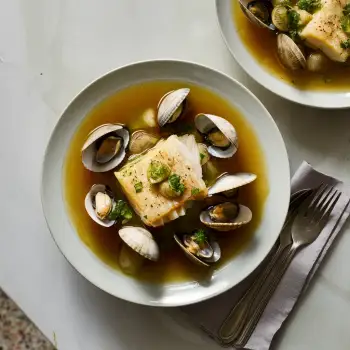
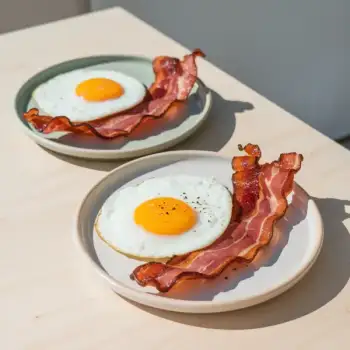
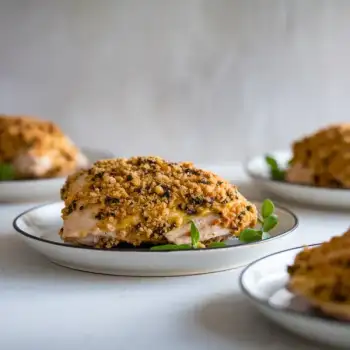
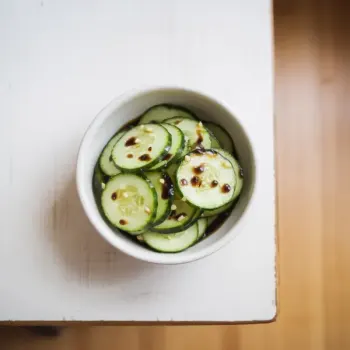
Comments (0)